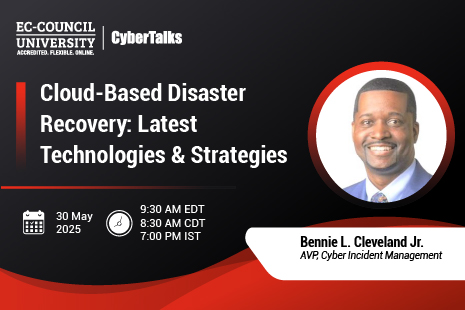Organizations are increasingly embracing a Multi Cloud Security strategy, utilizing services from various providers like AWS security, Azure security, and GCP security. This strategy offers flexibility and redundancy, which has transformed how businesses operate, offering scalability, agility, and cost-effectiveness. However, managing security across multiple cloud environments introduces complexity and potential vulnerabilities.
This blog post explores proactive threat hunting within the realm of Multi Cloud Security and how to choose the most suitable Cloud-Native Application Protection Platform (CNAPP) for your organization’s needs.
The Impact of Proactive Hunting in Multi Cloud Security
The traditional approach to cloud security often relies on reactive strategies, waiting for threats to prepare before acting. For instance, imagine a scenario where you identify 100 machines with port 22 open, which can be a potential risk. Refining your search criteria by adding filters, like specific CVEs (Common Vulnerabilities and Exposures), might reduce that number to 10.
However, proactive hunting empowers you to go beyond reactive responses. By leveraging data collected through artifact scanning, you gain the ability to craft precise queries, enabling you to swiftly pinpoint and mitigate potential threats.
This advanced capability may pose a challenge for a few organizations, particularly the ones with lower levels of cloud maturity. They might lack a dedicated team for proactive hunting, requiring the existing security team to shoulder this additional responsibility.
In cases like this, you must choose CNAPP, which inherently supports proactive hunting through posture management capabilities. With proactive posture management capabilities, CNAPPs empower security teams to keep an eye on cloud-native applications continuously for potential threats. This proactive approach not only enhances security but also ensures that organizations can effectively manage and mitigate risks, even with limited resources or expertise in proactive threat hunting.
Choosing the Right CNAPP in Multi Cloud Security
When selecting a CNAPP solution, it’s crucial to consider not just the current feature set offered by each vendor but also their future roadmap. From evolving to investing in the product, this forward-thinking approach is essential in a constantly developing space like cloud security.
Focusing solely on comparing the existing feature sets by different vendors might lead to a suboptimal choice. A vendor with a promising roadmap that aligns with your company’s vision for the future might be a better long-term fit for your organization, even if another vendor boasts a more comprehensive feature set.
Key Considerations for CNAPP Adoption
When adopting a Cloud Native Application Protection Platform (CNAPP), it’s essential to take a comprehensive approach to ensure the solution meets both current and future security needs. A thoughtful selection process can significantly enhance your cloud security posture and future-proof your investment. Here are key considerations to guide your selection process:
- Understand your company’s needs: Clearly define your current security challenges and long-term security goals. This will guide your CNAPP selection process. Determine the specific requirements of your cloud environment, such as compliance standards, threat landscapes, and operational workflows.
- Align with your vendor’s strategy: Look for a vendor whose vision for CNAPP development aligns with your company’s security roadmap. Assess the specific requirements of your cloud environment, as this clarity will enable you to tailor your CNAPP choice to effectively address your unique security demands.
- Beyond feature sets: While a robust feature set is crucial, prioritize a vendor with a clear path for innovation, ensuring that the CNAPP remains relevant and effective as cloud security evolves.
By carefully considering these factors, you can make an informed decision about the CNAPP that best suits your organization’s evolving security needs.
Many organizations fail to conduct a thorough self-assessment before diving into CNAPP selection. Clearly define your current security posture and your vision for the future to ensure a smooth and successful CNAPP adoption process.
The Role of Certified Cloud Security Engineer (C|CSE) in Multi Cloud Security
The Certified Cloud Security Engineer (C|CSE) is a Multi Cloud Security certification program by EC-Council that offers a holistic understanding of the latest security tools and techniques for cloud platforms such as AWS, Azure, and GCP platforms along with a vendor-neutral cloud environment. With the constant evolution of threats in the cloud industry, obtaining the specialized skills offered by C|CSE is critical for navigating multi-cloud environment complexities. Here is why the certification course is essential for staying ahead in the cloud security domain:
- Understanding the Multi-Cloud Architecture: Every cloud platform has its unique set of vulnerabilities. C|CSE trains its candidates to explore each platform and its environment, ensuring that no potential threat goes unnoticed.
- Proactive Incident Detection: The C|CSE certification helps candidates leverage advanced tools and techniques, such as SOAR, to identify and respond to threat incidents
- Cloud Forensics Investigation: A Certified Cloud Security Engineer (C|CSE) will be equipped in performing forensic investigation in cloud computing including several cloud forensic challenges and data collection methods.
- Compliance in the Cloud: Ensuring compliance with industry standards and best practices is a key responsibility of a C|CSE certified cybersecurity professional. Upon completion of C|CSE, you can help your organization navigate complex regulatory requirements, reducing the risk of non-compliance and potential fines.











